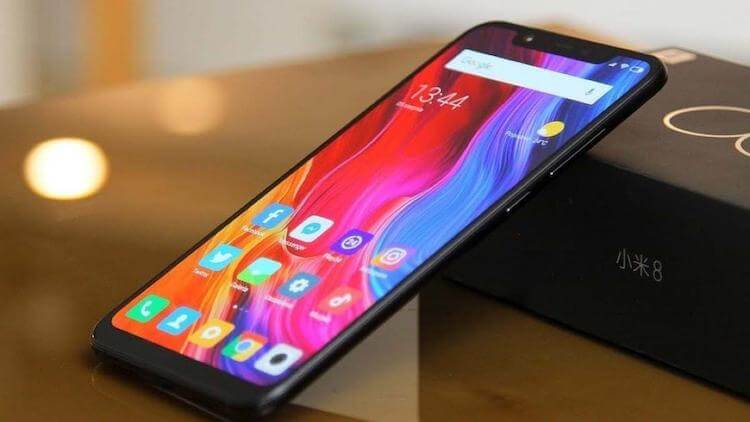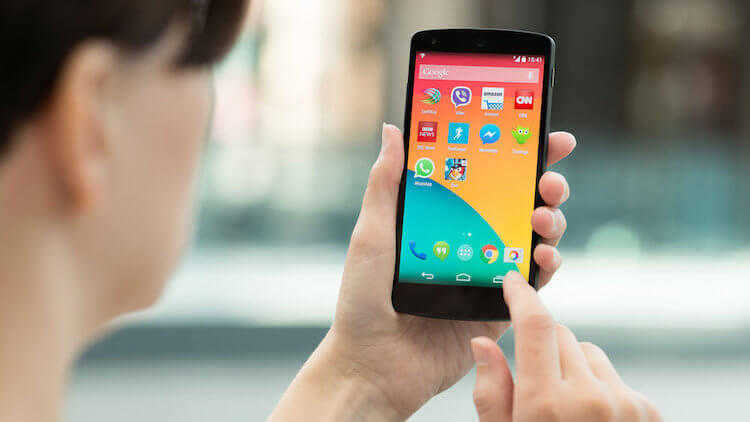Remember that some time ago Samsung promised to update its smartphones within three years. That is, devices released this year will be updated at least until 2022 and will receive Android 13. This is a good result for Android, but why can't the others do this and how long do they take to update at all? This question only seems difficult. In fact, there are at least three reasons why this happens, and all of them to some extent can be considered good, but only if you wish, you can deal with them. Samsung's example has proven this. Why can't the rest now, and will they ever be able to? The good news is, most likely, yes, they can. At the same time, soon enough, but so far it is not certain.

The smartphone must be updated, and two years is not enough.
Updates Android
Samsung really surprised many when it said it would be updating its smartphones within three years. I have already told you how the company will benefit from such a solution, but it is not this that is important to users, but the benefits presented to them. Customers of the Galaxy S10 series and newer (including the S10 Lite), the Galaxy Note 10 family and newer (including the Galaxy Note 10 Lite), the Galaxy A51 and newer, the Galaxy Tab S6 and newer and all of the company's foldable devices will now receive an update within three versions from the base one they came out with.
The importance of such a decision is difficult to overestimate, because the manufacturers Android – smartphones have already taught us that their devices are updated, at best, only for two years. It somehow by itself became the gold standard in the industry. Only the Google Pixel and OnePlus offered more, and some low-cost smartphones were updated only once, if not at all.
It is OnePlus that is almost the only company that, besides Google, can provide three years of updates for its smartphones. She recently proved that with the release of Android 11 for the OnePlus 5 and OnePlus 5T. Most often it turns out the other way around, and manufacturers are trying in every possible way to get away from this and not release updates for their smartphones.
A company Motorola is a perfect example. She has become so insolent that she initially stated that her Edge Plus smartphone will only be guaranteed to receive one version update Android. The company later changed its mind due to pressure from the media and consumers. Their dissatisfaction naturally began to grow and led to the fact that the company changed its mind and promised two years of updates. The very fact that the company tried to get by with one $ 1,000 phone update indicates a broader problem that consumers are facing.

How nice it is when a smartphone gets an update. You are remembered, you are taken care of.
Samsung's decision to upgrade for three years is due to the fact that the company needs to somehow stand out from competitors, who sometimes struggle to cope with even two-year upgrades. For example, Xiaomi updated its skin MIUI only for some lower-end devices, but did not update the base version Android. While this is better than no updates at all, it still means that your device will not be compatible with some applications and will not receive pleasant and important features. Sooner or later this will happen with every smartphone, but in this case it will happen very early.
Why Android updates worse iOS
It is especially unpleasant against this background to look at the neighbors Android by the operating system – iOS. The company Apple is offering updates this year iOS 14 that will support the iPhone 6S, which was released in 2015. That is, the new product of this year – iPhone 12 – will be updated until about 2025, and Google Pixel 5 and Samsung Galaxy Note 20 only until 2023. Of course, if nothing changes and everything goes on as usual. I have already told you which smartphones would receive Android 11 this year if their manufacturers followed the path Apple.
It should also be noted that Apple does not make loud statements about how long it will take to update devices, but simply updates them. If earlier this affected their performance, now often an old smartphone on a new one iOS works even better than before. For example, iPad Air 2 released in 2014 on iOS 8 worked better for me on iOS 13 than on iOS 10, although after iOS 11 I even stopped following updates for it, since I bought a newer one.
It turns out that the manufacturer has no objective reasons not to update the smartphone. There is only a reluctance to do it. System updates don't come out of thin air, as development, testing, and deployment often take time, money, and labor. Therefore, it is understandable that some small companies may not have that kind of money or resources. From here, by the way, sometimes the cost reduction follows. The company simply immediately admits that it is not going to spend money on updates and does not include work on them in the cost of the device.

The Google Pixel has been receiving updates for the longest time, but it's still not enough.
Another obstacle to longer updates is the huge variety of phones in the portfolios of many companies. A particular manufacturer may have to pay extra attention to certain phones as they are more popular. Performance is also a factor, since more powerful tubes can be upgraded slipshod and you don't have to worry too much about software optimization.
Why OnePlus has been updated for three years and the rest haven't
It is for this reason that OnePlus can afford to roll out updates within three years, because they essentially release one or two smartphones a year and it is much easier to work on optimizing them than when you have dozens of devices in the lineup and they are all updated every year. . Only in 2020 and only Xiaomi has released more than 20 phones. This is not even counting the line of the Poco sub-brand.
Today, thanks to Google initiatives like Project Mainline and Project Treble, which are helping to streamline the update process, we are a bit away from the technical hurdles of preparing updates. However, given the many shells, the variety of internals, and the need to work on new devices, there is a tremendous amount of work for companies to do. In the case of Android One, it's a little simpler.
Despite all these issues that manufacturers Android are facing, Samsung has demonstrated that brands can indeed offer more than two years of major version updates. And not just for flagships: mid-range phones like the Galaxy A51 will also benefit from the company's new promise.
Of course, the South Korean manufacturer is a colossal company with billions of dollars in revenue a year, so it could save resources for additional software updates. But it should also serve as a warning to other leading companies working with Android such as Huawei, Xiaomi and LG, which are also a lot of resources. Most likely, they will simply have no choice and will follow Samsung in the matter of updates. After all, the Koreans have a strong trump card and they need to somehow respond to this. It is the extra money needed to develop updates, and the unwillingness of companies to waste resources “just like that” is the third reason for the bad situation with updates. “This smartphone has already been bought, so why support it when you can invest in the development of a new one?” – how do you like this logic? I don't like it, but smartphone manufacturers are completely satisfied with it.

Even old smartphones still need to be updated.
Why Android is not updating
As a result, we have three main reasons why smartphones on Android update so poorly. Among them, there is a large model range and the difficulty of “averaging” it for the release of updates, the unwillingness of manufacturers to spend money and the desire to work on new devices. The latter outrages most of all, because this is done not to make the life of users easier, but in order to sell more.
Samsung effectively communicates to new and existing customers that they will be looked after for a long time. This is especially true in 2020 as smartphone spending has plummeted and people are holding onto their phones for longer than ever. In line with this trend, Samsung is also building trust in its existing users by encouraging brand loyalty by showing that they are willing to do whatever it takes for them.
Time will tell if other manufacturers will follow in Samsung's footsteps and decide on longer updates, but for now this is an important step in the right direction. And he can change a lot. It only seems like “you think, an extra year”, but in reality it may turn out that now is a year, then a year, and so we will get to the five-year whitewash. Someone had to start and for all my ambivalent attitude towards Samsung, now you can really take off your hat in front of them. This is not only a momentary profit from sales, it is, without exaggeration, a step into a brighter future.
